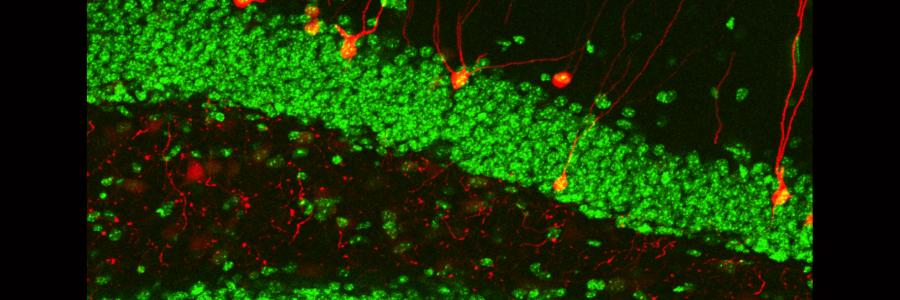Learning and Memory
“Memory is the diary we all carry about with us” (Oscar Wilde), and makes us who we are. What would be left of ourselves without the recollections of our childhood, the things we’ve learned in college or the thought of yesterday’s dinner with good friends? Without memory we no longer exist – except in the memory of others. For humans, memory is a vital social skill, and the very basis of cultural development.
Brain science therefore always had a keen interest in understanding memory. Breakthrough investigations have given us the hope that memory may be one of the first mysteries of the brain that we can solve. We understand that synaptic plasticity induces changes in the connections between neurons, changes that in turn enable the storage of information. The physical changes that support storage of information of a specific experience are called an engram. But how do we bridge the gap between this theoretical idea and understanding memory as we know it, in all its facets and complexity? How can a changing synapse contribute to the storage of complex information and how are memories retrieved? Why and how are memories lost, both in normal life as well as in disease, whereas under other conditions memories become too persistent and pathological (e.g. post-traumatic stress disorder, substance use disorders)?
Our grants supporting collaborative efforts into specific topics of this fascinating field of research.
The teams of Michel van den Oever and Priyanka Rao received funding from NWO-VENI and VIDI to gain fundamental mechanistic insight into the neuronal circuitry, cells and molecules that support memory formation, storage and retrieval. Their studies focus on hippocampal engrams supporting new/recent memories as well as cortical engrams underlying persistent/remote memories. Recently, they teamed-up with Wiep Scheper to investigate the effect of tau pathology on memory function at the level of engram cells, which is supported by a ZonMw-Open competition grant.
The team of Ronald van Kesteren investigates neuronal mechanisms of memory loss associated with Alzheimer’s disease (AD). They found that distinct inhibitory interneuron subtypes are affected in a mouse model of AD and that this contributes to memory dysfunction. In a project funded by Alzheimer Nederland and in collaboration with the team of Michel van den Oever, the role of inhibitory interneurons in cortical engram formation and reactivation will be investigated in AD mice.
Astrocytes can influence synaptic plasticity at the tripartite synapse. Supported by a NWO-M competition grant, the team of Mark Verheijen studies how this affects learning and memory. Moreover, together with Michel van den Oever’s team, they investigate how astrocytes shape the consolidation and reactivation of a memory engram.
In 2016, Sabine Spijker together with Guus Smit, Michel van den Oever, Priyanka Rao-Ruiz and Steven Kushner received a ZonMw-TOP grant entitled Molecular and cellular dissection of memory-encoding neuronal ensembles. We know that learning activates a subset of neurons in the brain, but now, using the newest techniques of gene and protein expression analyses and specific interventions in these activated neurons only, we aim to peek into the code of how memories are stored in the brain. This might lead to the identification of novel molecular targets for therapeutic intervention to treat memory deficits.
